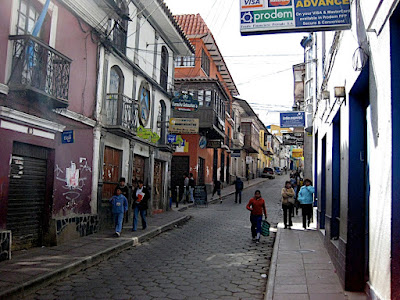The little lever that you use to adjust the seat normally has a plastic handle, to not only make it aesthetically pleasing but also to ensure comfort when your leg rests against it. For some reason beyond my realm of understanding (the bus was about 30 years old), my handle was missing, which wasn’t uncommon, but the fact that it had some how worn itself into a sharp point struck me as a tad odd. So three hours with blaring music, and a knife in my leg. Oh yeah, and if the gentleman in front of me had decided to recline, he would’ve sliced my legs off at the knees. That would’ve been unpleasant for all concerned.
Potosi was worth this dangerous expedition. Not only the highest city on our beautiful rock earth, but at one stage of its history the largest city on the planet. We’re talking bigger than London & Paris at the time. From Cerro Rico (the large dormant volcano about which Potosi was built around) nearly 45,000 tons of pure silver was mined between 1556 and 1783. It is amazing that this tiny little mining town, now stricken by poverty once bankrolled an entire Empire. Of course we know who did the work. Imperialists never get their hands dirty. Wikipedia estimates that nearly 8 million labourers died as a result of working the mines. Death was and still is an occupational hazard. Like twisting your ankle. It’s unfortunate, but it happens. Today Cerro Rico is operated by a cooperative of miners. Some mine as part of a family tradition. Most, over 90%, are there because no other employment opportunity exists. However the silver stopped pouring out of the mine. It is essentially exhausted. However these miners persist chasing the stretched veins of silver to earn a wage that barely guarantees survival.



These miners operate under the ground, drilling and chiseling away at the rock, sometimes taking up to 2 hours to make a hole 15cm deep. After a hole has been made, it is stuffed full of dynamite and detonated. There are no structural or geological engineers here. Experience is the only science.






Well written A. Dont forget that we got to set of some dynamite hehe..
ReplyDelete